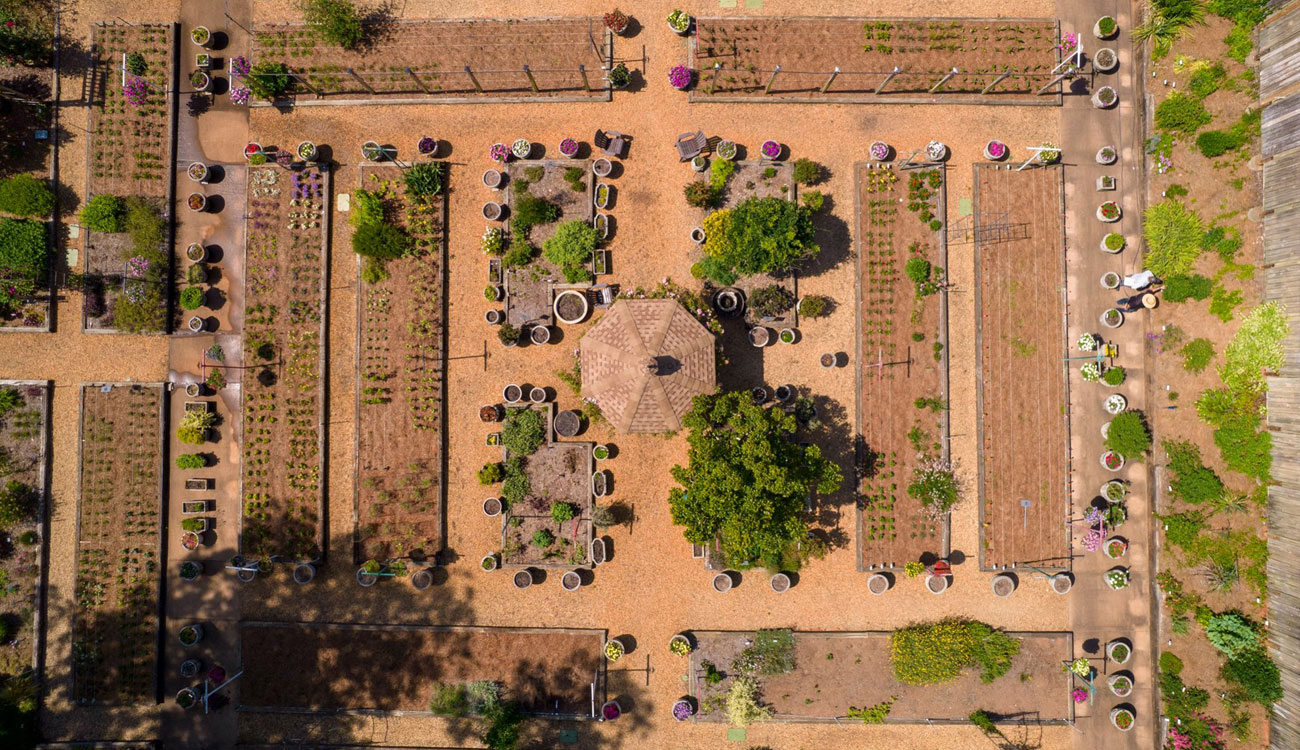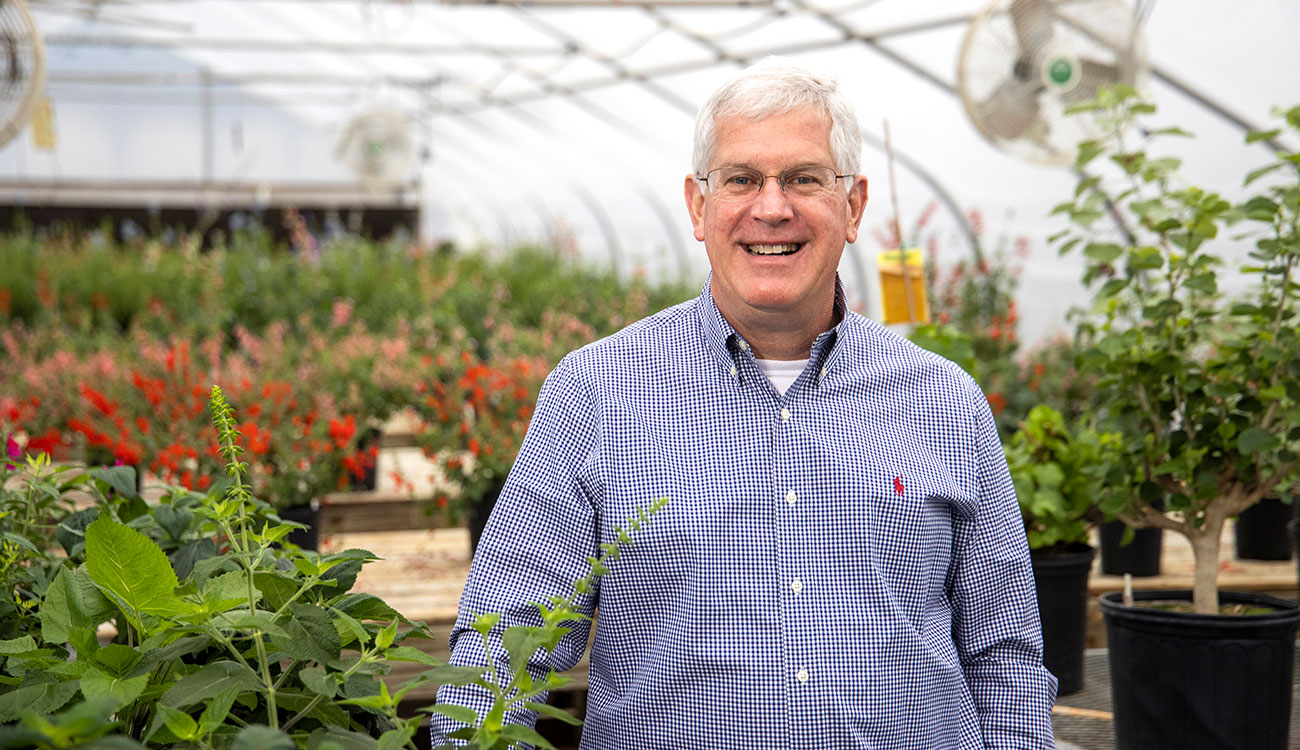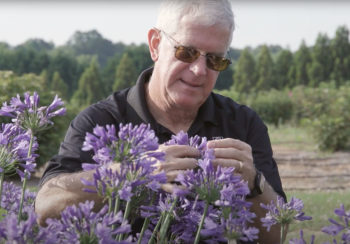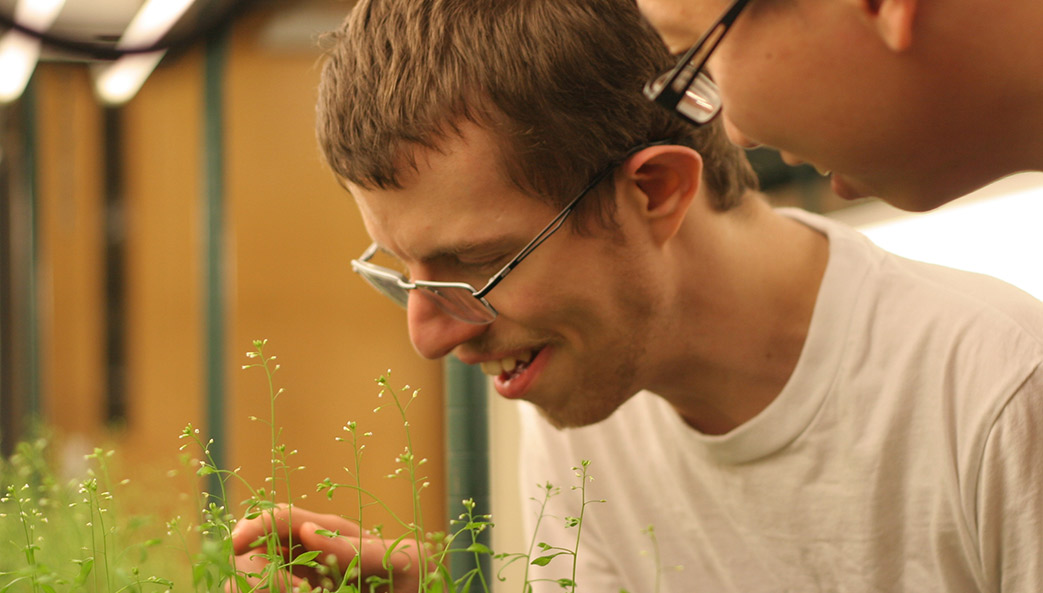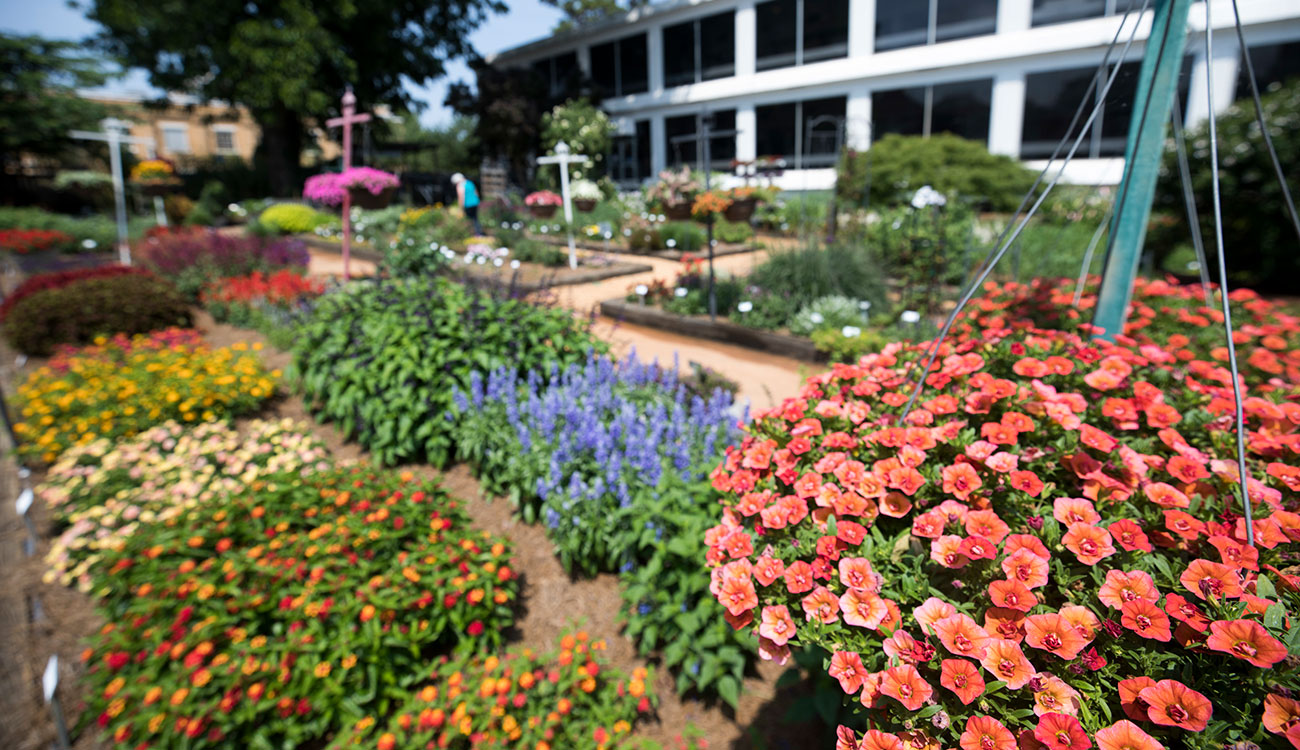
How much of your job is in the nursery or the field versus in the lab?
I’d say the lab work is maybe 20% of what we do. Right now, I’m almost a full-time farmer out at the Durham Horticulture Farm in Watkinsville. I was out there with three graduate students this morning potting up some germplasm that we had irradiated in the lab.
My program is traditional breeding: making crosses in the greenhouse. We also use techniques such as ploidy manipulation, so doubling the chromosomes. Sometimes we have good success taking two sets of chromosomes and turning them into four sets of chromosomes. To induce sterility for species that we don’t want seeding around or becoming invasive, we then take our normal two sets of chromosomes and cross that with the one that we doubled, so you have a two times a four, and you end up with three. Odd numbers of chromosomes in plants don’t generally lead to fertility—basically not all the chromosomes can find a dance partner, to put it in simple terms.
We also do mutation breeding with gamma radiation. It’s very safe, just random busting up of the DNA, and you don’t know exactly what you’re going to get. We can also do chemical mutagenesis in the laboratory.
What kinds of resources does UGA have that enable you to do work that you perhaps wouldn’t be able to do someplace else?
First, the physical facilities, such as the farms we have within the College of Agricultural and Environmental Sciences. Down in Tifton, I had 11 acres that I was in charge of, so that gave me plenty of land to plant things out to trial. Here in Athens, we have the Durham Hort Farm that’s about 90 acres. Between greenhouses and field space, I’ve got several acres of plant evaluations out there, plus a container pad and shade houses and greenhouses, things that one needs to do this sort of work.
We also make use of UGA’s core facilities, like Georgia Electron Microscopy, which we’ve used for seed germination studies and plant identification work. We also use the Cytometry Shared Resource Laboratory in the Coverdell Center. We do a lot of flow cytometry, trying to figure out the genome size and chromosome numbers. Have we actually doubled the chromosomes? Have we gotten the triploid we’re looking for? We’re able to use that core facility to verify those things.
The other huge benefit here at UGA that allows ornamental breeding is the Cultivar Development Research Program. That allows us to get equipment, pay for workers, partially pay for graduate students, pay for supplies you need like fertilizers, irrigation tubing or for repairing your greenhouse when the plastic blows off in a storm. Ornamental breeding at UGA derives a huge benefit from that program.
And then also, at least for me, the team in Innovation Gateway is fantastic to work with. Whenever we have a company that wants to come look at things, they help set up the meetings and organize everything. From the commercialization side, the contacts they have and how they’re able to help with logistics of visitors coming to handling trial agreements and plant patents, are all very helpful.
Do you have a favorite plant or cultivar you’ve developed?
Just for being out there in the market and having success, and since I’m known as the guy who loves hollies, Emerald Colonnade® is probably one of my favorites. It’s such a useful plant in the landscape—you can grow it as a formal hedge, you can use it as a small hedge. It’s been used successfully in topiary programs, making spirals and pompoms. It doesn’t have the pest problems other hollies have because of the hybrid parentage. It was kind of my first one to hit the market, and it’s been so successful. It’s been the No. 1 broadleaf evergreen for the company that’s selling it.
Is it gratifying when you come across plants you’ve developed growing out in the world, for example in nurseries or around people’s homes?
Oh yeah. One example is this new hibiscus program we have, Head Over Heels, through Star Roses. Last fall my wife and I were in the local Lowe’s, and I saw my hibiscus for the first time in marketable containers with the tags. My wife was looking at something else, and I wandered over because I saw something that caught my eye. And all of a sudden, I’m like, “Yes!” My wife says, “What is it?” And I said to her, “These are mine.”
